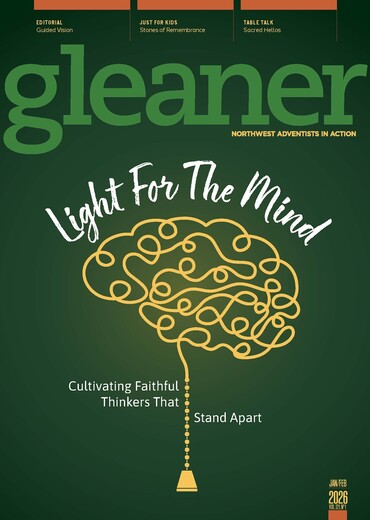In 1934 George Herbert Mead (and later with the help of Harold Blumer) created a communication theory known as symbolic interactionism. The essential idea is that people assign meaning to objects in the world and that influences how they interact. However, these meanings aren’t static. As we connect with other people we can modify meanings, which in turn change the way we act. And as our actions and responses change, they help shape the way we live.
I reflected on this theory as I read George Knight’s new book End-Time Events and the Last Generation. My former professor does an excellent job giving an overview of the history of conflict regarding the development and conflicts surrounding Last Generation Theology and the book Questions on Doctrine (among other things). While there is much to comment on, Knight frequently points to our confusion over terms such as “atonement” and “sinful nature.” These kinds of theological terms, among countless others, are loaded with meanings and semantic ranges. Not only do these terms have historical contexts but semioticians (people who study signs) have long pointed out that meanings are often unique to people and not the words or symbols themselves. That can make language slippery when it comes to pinning down meaning (see I.A. Richards and C.K. Ogden, The Meaning of Meaning).
Part of the problem that Knight highlights isn’t just the different meanings assigned to words but the exclusion of differing meanings from the dialogue. In the 1940s M.L. Andreasen was the leading theologian who had developed a popular but eventually controversial concept known as Last Generation Theology. L.E. Froom was a theologian and denominational leader brokering dialogues with the evangelical world in order to remove unnecessary heretical stigmas from Adventism. During this process with evangelical leaders Knight observes that Froom was influential in excluding Andreasen from the discussions, effectively putting him on the sidelines by the mid-50s.[1]
Later on, Knight observes, Questions on Doctrine would be the book that articulated these Adventist/evangelical dialogues but Andreasen “was not included in the reading committee of 250 Adventist leaders that approved the book for publication.”[2] One example of how this disconnect contributed to misunderstandings is cited when Froom commented on the subject of whether or not the atonement’s sacrificial aspect was completed on the cross. He wrote an article in Ministry magazine stating, “That is the tremendous scope of the sacrificial act of the cross — a complete, perfect, and final atonement for man’s sin.”[3] Andreasen, understandably hurting from his exclusions and what he saw as a loss of a distinct Adventist doctrine he personally developed, responded.
However, in his response, Andreasen made a minor but significant change to Froom’s sentence. He failed to include Froom’s dash and quoted him as saying, “the sacrificial act on the cross is a complete, perfect, and final atonement for man’s sins.”[4] Instead of the sacrificial aspect of the atonement being distinct from the application of the atonement in the heavenly sanctuary, Andreasen's response suggested Froom's statement collapsed the entirety of the atonement into the sacrifice of the cross.
Symbolic interactions like these not only confuse meanings but contribute to bitter conflicts we are still negating today.
Knight reflects, “One can only speculate on the different course of Adventist history if Andreasen had been consulted regarding the wording of the Adventist position on the atonement, if Froom and his colleagues hadn’t been divisive in their handling of issues related to the human nature of Christ, if both Froom and Andreasen would have softer personalities.”[5] However, as the book states, “ifs aren’t the stuff of history” — but they can be instructive for the present.
Life in the “fidgital age” — with its host of “triggers” through social media — lends itself to rapid response and a lack of positive symbolic interactions. Instead of dialogue we react, rant and respond to images and terms we haven’t carefully evaluated. As a result, our symbolic interactions hang on by a thread in a Facebook post. We assign meaning in what Walter Lippmann calls “pseudo-environments” and what Daniel Boorstin labels “pseudo-events” — essentially information in highly mediated environments that affirm our stereotypes of the world without careful exploration of the facts.
How are your symbolic interactions doing? Where do they occur? As we move through the 21st century as a church we will need to recapture slow time and respectful face-to-face dialogue if we are to create meanings that help us toward our mission. The King James Version renders Prov. 4:7 in a way that fits our modern context well: “With all thy getting get understanding.” We will always have disagreements, and meanings will change, but perhaps we can find a way to navigate those human realities with a little more grace.
[1] Knight, George R. End-time Events and the Last Generation: The Explosive 1950s (Nampa, ID: Pacific Press Publishing Association, 2018) p. 40.
[2] Ibid.
[3] Froom, L.E. “The Priestly Application of the Atoning Act,” Ministry, 30 (2) (February 1957) p. 10.
[4] Andreasen, M.L. “A Review and Protest,” mimeographed document (October 15, 1957).
[5] Knight, p. 53.











